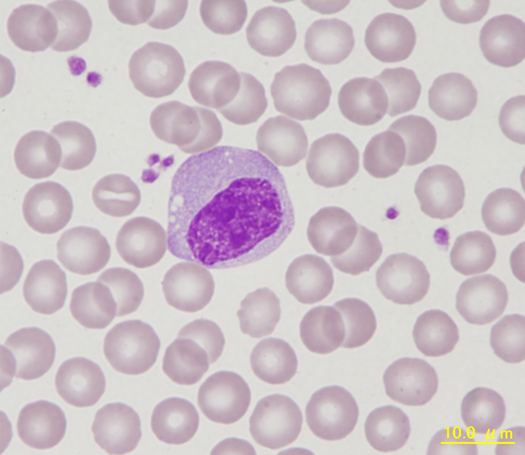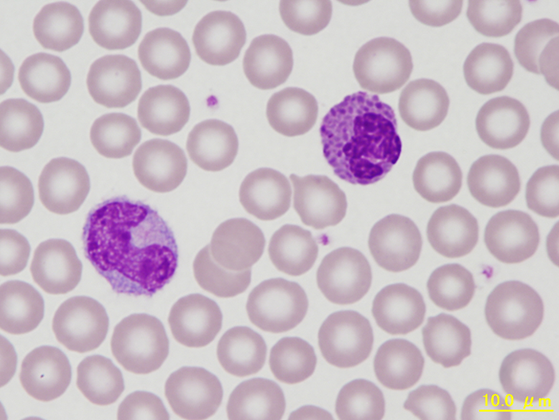Scientific Image Gallery
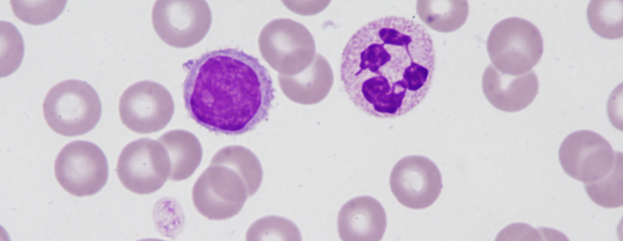
Lymphocyte to the left and segmented neutrophil to the right. Note the different chromatin patterns of the nuclei of the two cell types.
<p>Lymphocyte to the left and segmented neutrophil to the right. Note the different chromatin patterns of the nuclei of the two cell types.</p>
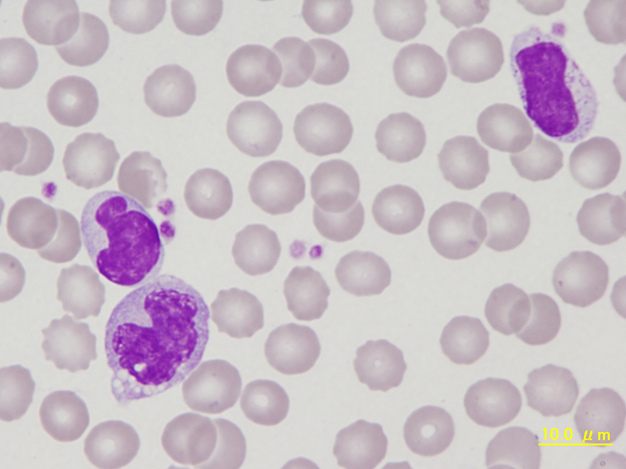
The lymphocyte on the upper right shows many azurophilic granules. Adjacent to the lymphocyte on the left there is a monocyte containing numerous vacuoles.
<p>The lymphocyte on the upper right shows many azurophilic granules. Adjacent to the lymphocyte on the left there is a monocyte containing numerous vacuoles.</p>
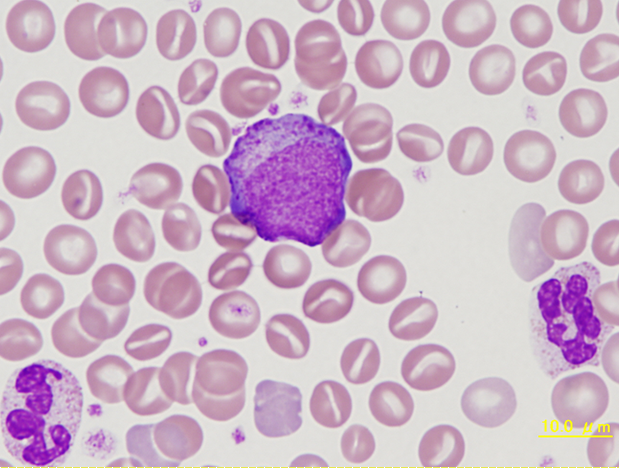
Neutrophilic myelocyte with many azurophilic granules in comparison to two mature, segmented neutrophils. Immature blood cells are an occasional finding in the peripheral blood of marmosets.
<p>Neutrophilic myelocyte with many azurophilic granules in comparison to two mature, segmented neutrophils. Immature blood cells are an occasional finding in the peripheral blood of marmosets.</p>
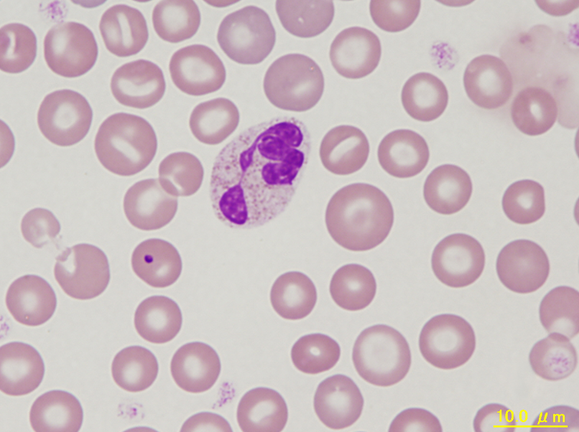
Marmoset blood smear showing a neutrophil with segmented nucleus and granules that appear eosinophilic. The red blood cell to the left contains a Howell-Jolly body, a common finding in the marmoset.
<p>Marmoset blood smear showing a neutrophil with segmented nucleus and granules that appear eosinophilic. The red blood cell to the left contains a Howell-Jolly body, a common finding in the marmoset.</p>
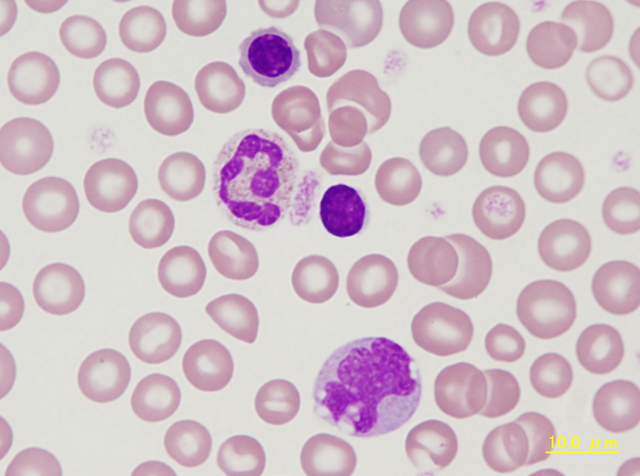
Typical neutrophil, lymphocyte (centre) and monocyte (bottom) of a marmoset. At the top there is an erythroblast showing condensed chromatin and a greater amount of slightly reddish cytoplasm reflecting haemoglobin synthesis. Giant platelet between the neutrophil and lymphocyte.
<p>Typical neutrophil, lymphocyte (centre) and monocyte (bottom) of a marmoset. At the top there is an erythroblast showing condensed chromatin and a greater amount of slightly reddish cytoplasm reflecting haemoglobin synthesis. Giant platelet between the neutrophil and lymphocyte.</p>
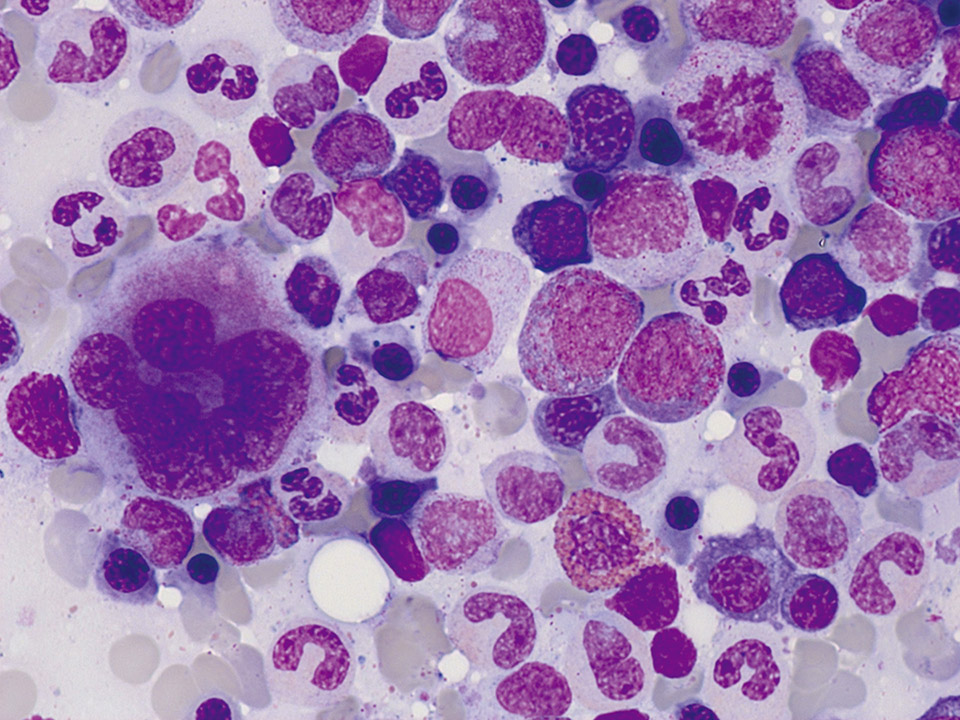
Normal bone marrow cytology. Some cells are always squeezed and damaged. These cells are called smudge cells. Smudge cells cannot be examined and must not be regarded as pathological (They have nothing to do with Gumprecht shadows in the peripheral blood smear). On the top right a mitosis is visible.
<p>Normal bone marrow cytology. Some cells are always squeezed and damaged. These cells are called smudge cells. Smudge cells cannot be examined and must not be regarded as pathological (They have nothing to do with Gumprecht shadows in the peripheral blood smear). On the top right a mitosis is visible. </p>

The abbreviations mean: Band: Band neutrophil, E3: Polychromatic erythroblast, E4: Orthochromatic erythroblast, Eo: Eosinophil granulocyte, Ly: Lymphocyte, Mega: Megakaryocyte, Meta: Metamyelocyte, Mo: Monocyte, My: Myelocyte, Plasma: Plasma cell, Promy: Promyelocyte, SC: Smudge cell, Seg: Segmented neutrophil, ?: No clear assignment possible.
<p>The abbreviations mean: Band: Band neutrophil, E3: Polychromatic erythroblast, E4: Orthochromatic erythroblast, Eo: Eosinophil granulocyte, Ly: Lymphocyte, Mega: Megakaryocyte, Meta: Metamyelocyte, Mo: Monocyte, My: Myelocyte, Plasma: Plasma cell, Promy: Promyelocyte, SC: Smudge cell, Seg: Segmented neutrophil, ?: No clear assignment possible.</p>
